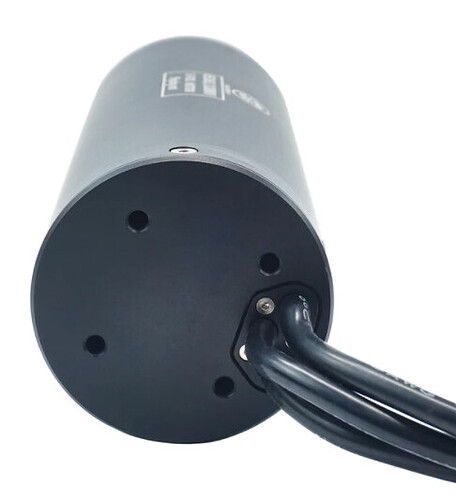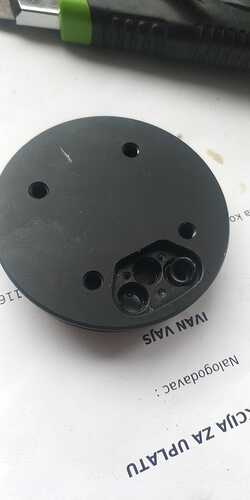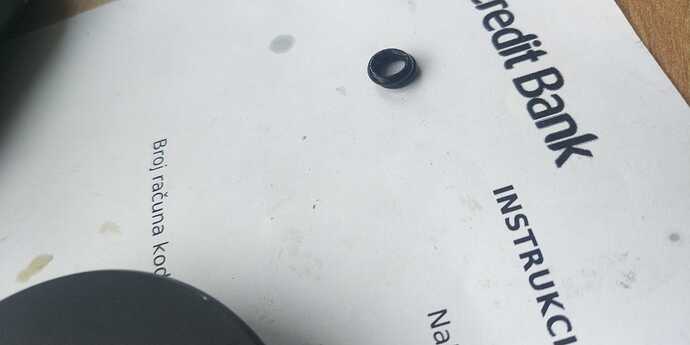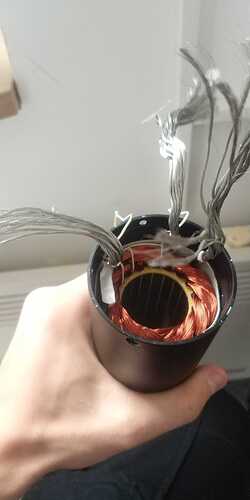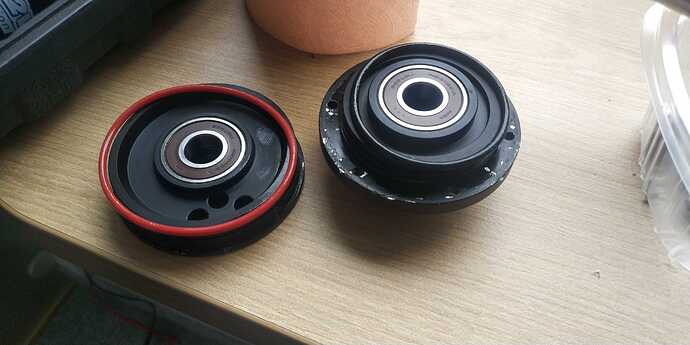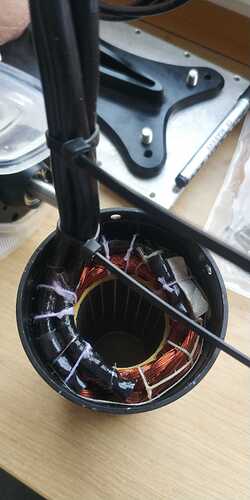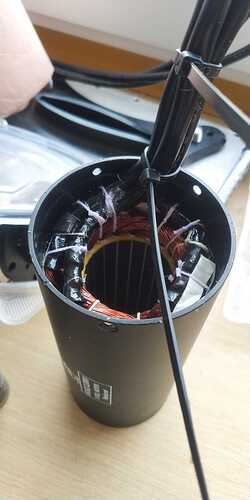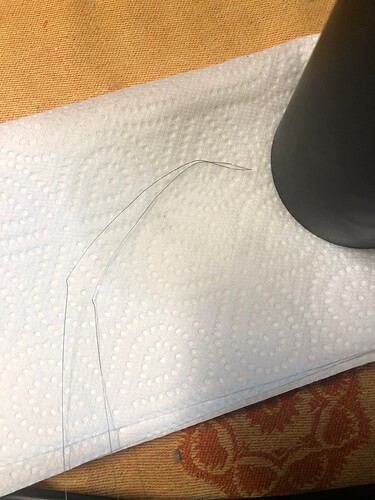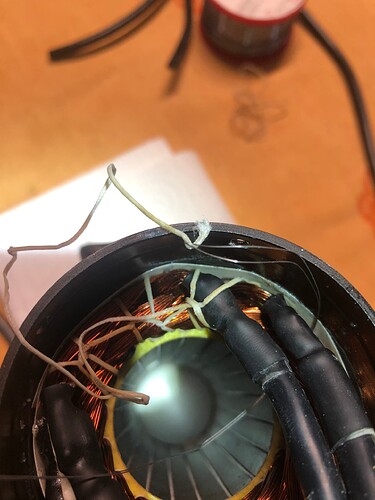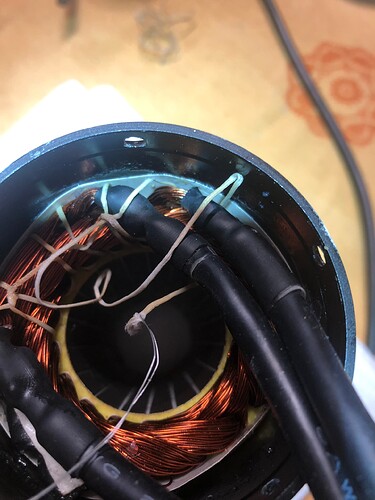I noticed that my internal wires going to the Flipsky motor have become corroded. Has anybody taken apart the area where the 3 wires connect to the motor? I’d like to replace the wires but I am a bit apprehensive to do this. I’m afraid that I will be unable to make this area water tight again. Any ideas?
Hi,
I had to replace my wires as insulation broke on one wire, I used CRC 3-36 that ruined silicon insulation. This is what @jkoljo mentioned here in the comment.
Trust me, these holes on the bottom motor cover and holes on the small cover for the wires are so tight that I thought it can not be assembled back. If you manage to put it back, there is no chance of leakage from back of the motor.
It is not an easy job to do but it is doable. Opening motor and removing wires is pretty straightforward, you need to remove a small cover for the wires (3 screws), remove 6 rubber o-rings (2 on each wire). Be careful with o-rings. Remove screws from the side, and to pull it out. slowly. Keep eye on the o ring that goes around the edge, the red one on the pictures. Putting everything back is a more difficult part as these holes are really tight and you have to pull whole wire through these holes.
this is how it look when wires are out, you can see small o rings, there are 2 for each wire.
o-ring:
how it looks opened with removed insulation:
here are top and bottom covers:
and this is how it looks after it is assembled back:
once nail polish(used this for wire insulation) is cured, I put everything back. It works for now.
This time I used CRC 6-66 but still have a feeling that silicon insulation is swelling, hopefully, it will not break again.
Thanks so much for all the info. I’ll be breaking into mine in the next week or so. Did you use 10 guage wire replacement?
Also, I filled my motor with corrosion X which I can only assume helped prevent it from being corroded by the salt water. However, I wonder if there is anyway to inject corrosion X into the wire casing in order to prevent the need to do this again.
By the way, here is the response from the factory when I reached out to them on this topic of how to replace the wires.
Dear Sir
Hello, the engineer reported that there is corrosion on the surface of the wire soaked in water, which does not affect the current. If the wire is corroded, take it and wipe it clean to see if there is any damage. If it is, it needs to be replaced and sealed, and it needs to be wrapped with waterproof electrical tape. If you replace and weld by yourself, you need to fill the glue to seal, if the sealing is not enough, the motor will burn easily if the water enters. Because after filling the glue, it is necessary to vacuum the air inside and then perform a series of operations such as drying. If one of these steps is not done, water will still enter after being soaked in the water for a long time. The inside of our motor has been glued and sealed, and the entire motor has been fully waterproofed. In addition, if you want to make the part on your picture better waterproof, you need to glue it to seal it.Hope these can help you
Jaqueline
Sincerely
Flipsky sales and services team!
I used the same as the original, 8AWG wires.
Regarding the wires I did not find any trace of glue, there was only heat shrink on the part where was welded to the motor wires. I’m thinking now, maybe it would be better to use heat shrink with glue inside, maybe this can prevent oil from getting inside of the wires.
What did you use to re-tie the wires?
The wires were originally tied with white lace.
Hi @kevind,
Sorry for late reply. I’ve used rope of similar thickness , the only difficult part was to pull it under the windings. For that I used fishing nylon, I curved it on top and on the other side I melted it a bit and connected it to the rope.
Thank you very much ivan, for the pictures.
Following the dismantling of my motor for a new project, I also needed to change the cables, because the corrosion X damaged the silicone of the cables.
Your explanation on the disassembly helped me a lot.
I used a small metal wire to pass the string around the copper windings
I’m wondering if I’ll be in this situation one day soon, as I’m using corrosion x in my motor.
Do the 65161 motors stay dry inside if you don’t add any protective liquid, and use them in saltwater? Or would they end up a corroded mess, rather than needing cables replacing.
Have people had success with any other corrosion inhibitors, or mineral oil?
Mineral oil works great. It wicks slowly down the wires but other than that, no issues what so ever.
How are you connecting the windings to the new wire? Crimping, then heat shrink?
I have the same question as ElFoilLoco. Can’t quite tell from the pics what happens once those strands are exposed and how to best connect them to the new leads.
I ave a Maytech 65162 that has failed just above the mast due to corrosion and am considering replacing the whole thing if I can’t do a repair where it failed.
Normally soldering, it can be tricky on old wires, if there is corrosion of the copper (or oil from waterproofing) the soldering will be tricky.
I have soldered mine, no difficulties. Took me a while to bin’s Thema down again though
